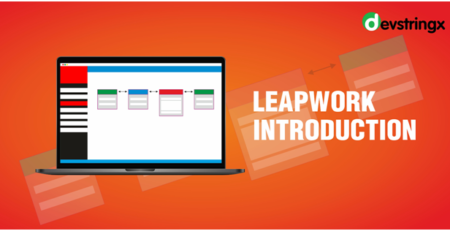A Comprehensive Exploration of Performance Testing: Approaches and Techniques – DS
Exploration of Performance Testing
In the 21st century, the software development landscape is rapidly evolving. Therefore, simply ensuring that a product operates correctly is no longer sufficient. This is because users now expect software to perform seamlessly and respond promptly in diverse scenarios. Hence, it is where the significance of performance testing comes into play.
Understanding of Performance Testing
Performance testing plays a significant role in software testing. It focuses on evaluating how a system performs under different conditions to identify bottlenecks, weaknesses, and other issues that are related to performance before deploying the software live. This approach helps organizations avert disasters such as system crashes, sluggish response times, and dissatisfied users.
Different types of performance testing focus on specific aspects of performance and help address various questions and concerns pertinent to the software or system being tested.
1) Load Testing
This process evaluates how well a system performs under anticipated loads and assists in determining both its point and capacity to handle expected traffic.
2) Stress Testing
Stress testing surpasses the limits of a system to comprehend its behaviour under challenging conditions. It assists in identifying vulnerabilities that may not become apparent during load testing.
3) Capacity Testing
It evaluates the system’s capacity to handle anticipated loads, ensuring scalability as the number of users increases.
4) Scalability Testing
It focuses on the system’s ability to adjust and accommodate varying loads without compromising performance.
5) Endurance Testing
It examines how the system performs over a period and aids in detecting memory leaks or performance degradation that could occur over time.
Good to Read:- List of Top Mobile App Performance Testing Tools
Strategies for Effective Performance Testing
As technology progresses at breakneck speed and user expectations soar to new heights, developers and organizations are faced with a pressing question: What does it take to facilitate effective performance testing? To find the answer, let us explore some strategies that can ensure effectual performance testing:
1) Clearly Define Objectives
The foundation of any performance testing endeavour lies in defining objectives. What aspects of your application performance are you aiming to test? Are you interested in evaluating response times, resource utilization, or the capability of the system to handle users? Establishing objectives helps solve these issues and guides the testing process.
2) Choose Appropriate Tools
Selecting appropriate tools is crucial for performance testing. There are specific tools for this purpose, each with strengths and weaknesses. The choice should align with your objectives, budget, and the technology stack being used.
3) Create Realistice Test Scenarios
To effectively simulate real-world conditions, it is crucial to design test scenarios that actual user interactions. For this, consider factors such as user behaviour, data volume, and network conditions. By creating realistic scenarios, you can better identify and solve performance bottlenecks.
4) Establish a Baseline
Before implementing any changes or optimizations, it is crucial to establish a baseline for your application performance. This baseline represents the state of the performance and serves as a reference point for measuring the impact of future modifications.
5) Conduct Load Testing
Load testing plays a vital role in performance testing as it involves simulating expected user loads to evaluate the system’s performance under pressure. To conduct this process, start with a load and gradually increase it while monitoring key performance metrics. This approach helps pinpoint the breaking point and uncover blockages.
6) Real-Time Analysis of Results
During performance tests, you need to monitor and analyse results in time. Keep an eye out for any irregularities or deviations from expected performance metrics. Real-time analysis enables adjustments and provides valuable insights.
7) Optimizatoin and Retesting
Based on the results of performance tests, make optimizations to your application’s code, infrastructure, or configurations. After implementing these improvements, conduct retesting to ensure positively impacted performance.
Effective Methodologies for Performance Testing
There are diverse performance testing methodologies that serve unique purposes and help ensure that software or systems meet performance requirements and provide a satisfactory user experience in multiple scenarios and conditions. So, the preference for performance testing methodology should depend on the specific goals and characteristics of the software being tested.
1) Waterfall Approach
In the Waterfall model, performance testing is typically conducted towards the end of the development cycle. While this approach has its drawbacks, such as issue detection, it allows for testing once the application is fully developed.
2) Agile Approach
In methodologies like Scrum, performance testing is integrated into each sprint. This approach ensures that performance testing is a process that enables detection and resolution of issues.
3) DevOps and Continuous Testing
DevOps practices emphasize collaboration between development and operations teams. Interestingly, performance testing seamlessly integrates into the DevOps pipeline, enabling testing and immediate feedback, which is crucial for delivering high-performance software.
4) Shift Left Testing
Shift Left testing involves conducting testing activities in the development lifecycle and performance testing takes place as early as possible during the development phase itself. It helps identify and address performance-related issues before they become more difficult and expensive to resolve.
Good to Read- Performance Testing in DevOps and Agile : Best practices
Challenges in Performance Testing
Performance testing, while essential for ensuring the reliability and efficiency of software applications and systems, comes with several challenges that need to be addressed by testing teams and organizations. Needless to say, despite its significance, performance testing does present a share of challenges, such as:
1) Creating Realistic Test Environments
Accurately replicating realistic test environments can be quite a task. It requires consideration of factors such as network latency, user behaviour, and data complexity to ensure the creation of realistic test environments.
2) Scaling Test Infrastructure
It is complex and costly to confirm that the test infrastructure adequately scales to simulate the expected user load. To address this challenge, it is advisable to leverage cloud-based solutions.
3) Identifying the Root Cause of Issues
Pinpointing the root causes of performance issues when they arise can often be a time-consuming process. To tackle this, it is crucial to have monitoring and profiling tools in place that enable the identification and resolution of performance bottlenecks.
4) Data Management
The process of managing test data in scenarios involving datasets poses a significant challenge. Thus, implementing strategies for data management is crucial to maintain the accuracy of tests.
Conclusion
Performance testing plays a significant role in software development, as it is a great way to ensure that applications meet user expectations for speed and responsiveness. Organizations can proactively identify and address performance issues during development by establishing objectives, choosing appropriate tools, and implementing effective strategies and methodologies. Investing in performance testing ultimately results in enhanced user satisfaction, reliability, and a competitive edge in software development.
Hire India Top-Notch Performance Testing Services from Devstringx Technologies














